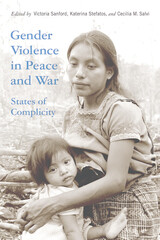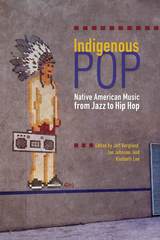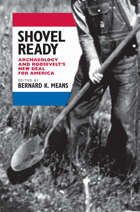4 books by Johnson, Jan

Gender Violence in Peace and War
States of Complicity
Sanford, Victoria
Rutgers University Press, 2016
Reports from war zones often note the obscene victimization of women, who are frequently raped, tortured, beaten, and pressed into sexual servitude. Yet this reign of terror against women not only occurs during exceptional moments of social collapse, but during peacetime too. As this powerful book argues, violence against women should be understood as a systemic problem—one for which the state must be held accountable.
The twelve essays in Gender Violence in Peace and War present a continuum of cases where the state enables violence against women—from state-sponsored torture to lax prosecution of sexual assault. Some contributors uncover buried histories of state violence against women throughout the twentieth century, in locations as diverse as Ireland, Indonesia, and Guatemala. Others spotlight ongoing struggles to define the state’s role in preventing gendered violence, from domestic abuse policies in the Russian Federation to anti-trafficking laws in the United States.
Bringing together cutting-edge research from political science, history, gender studies, anthropology, and legal studies, this collection offers a comparative analysis of how the state facilitates, legitimates, and perpetuates gender violence worldwide. The contributors also offer vital insights into how states might adequately protect women’s rights in peacetime, as well as how to intervene when a state declares war on its female citizens.
[more]

Il viaggio a Reims, ossia L'albergo del giglio d'oro
Dramma giocoso in one act by Luigi Balochi
Gioachino Rossini
University of Chicago Press, 2000
Rossini composed his last Italian opera to celebrate the coronation of the French king Charles X in 1825. A virtuoso tour de force, it was conceived for the greatest voices of the time and calls for an exceptional cast of fourteen soloists: three prima donna sopranos, an alto, two tenors, four baritones, and four basses. One of the score's glories is the audacious "Gran Pezzo Concertato" for the fourteen soloists. In the Finale national toasts derived from patriotic songs set the driving music awhirl.
Rossini permitted only four performances of Viaggio, later reusing half the score for Le Comte Ory. The manuscript sources were presumed lost until part of the autograph was recovered in the 1970s at the Rome Conservatory, while other sources were found in Paris (including original performing parts) and Vienna. The identification of a missing chorus completed the restoration of this magnificent work to the repertory.
Along with the reconstructed score, the critical edition provides historical information about the libretto's relationship to French politics of the era and details on the first production.
Rossini permitted only four performances of Viaggio, later reusing half the score for Le Comte Ory. The manuscript sources were presumed lost until part of the autograph was recovered in the 1970s at the Rome Conservatory, while other sources were found in Paris (including original performing parts) and Vienna. The identification of a missing chorus completed the restoration of this magnificent work to the repertory.
Along with the reconstructed score, the critical edition provides historical information about the libretto's relationship to French politics of the era and details on the first production.
[more]

Indigenous Pop
Native American Music from Jazz to Hip Hop
Edited by Jeff Berglund, Jan Johnson, and Kimberli Lee
University of Arizona Press, 2016
Popular music compels, it entertains, and it has the power to attract and move audiences. With that in mind, the editors of Indigenous Pop showcase the contributions of American Indian musicians to popular forms of music, including jazz, blues, country-western, rock and roll, reggae, punk, and hip hop.
From Joe Shunatona and the United States Indian Reservation Orchestra to Jim Pepper, from Buffy Saint-Marie to Robbie Robertson, from Joy Harjo to Lila Downs, Indigenous Pop vividly addresses the importance of Native musicians and popular musical genres, establishing their origins and discussing what they represent.
Arranged both chronologically and according to popular generic forms, the book gives Indigenous pop a broad new meaning. In addition to examining the transitive influences of popular music on Indigenous expressive forms, the contributors also show ways that various genres have been shaped by what some have called the “Red Roots” of American-originated musical styles. This recognition of mutual influence extends into the ways of understanding how music provides methodologies for living and survival.
Each in-depth essay in the volume zeros in on a single genre and in so doing exposes the extraordinary whole of Native music. This book showcases the range of musical genres to which Native musicians have contributed and the unique ways in which their engagement advances the struggle for justice and continues age-old traditions of creative expression.
From Joe Shunatona and the United States Indian Reservation Orchestra to Jim Pepper, from Buffy Saint-Marie to Robbie Robertson, from Joy Harjo to Lila Downs, Indigenous Pop vividly addresses the importance of Native musicians and popular musical genres, establishing their origins and discussing what they represent.
Arranged both chronologically and according to popular generic forms, the book gives Indigenous pop a broad new meaning. In addition to examining the transitive influences of popular music on Indigenous expressive forms, the contributors also show ways that various genres have been shaped by what some have called the “Red Roots” of American-originated musical styles. This recognition of mutual influence extends into the ways of understanding how music provides methodologies for living and survival.
Each in-depth essay in the volume zeros in on a single genre and in so doing exposes the extraordinary whole of Native music. This book showcases the range of musical genres to which Native musicians have contributed and the unique ways in which their engagement advances the struggle for justice and continues age-old traditions of creative expression.
[more]

Shovel Ready
Archaeology and Roosevelt's New Deal for America
Bernard K. Means
University of Alabama Press, 2013
Shovel Ready provides a comprehensive lens through which to view the New Deal period, a fascinating and prolific time in American archaeology.
In this collection of diverse essays united by a common theme, Bernard K. Means and his contributors deliver a valuable research tool for practicing archaeologists and historians of archaeology, as well as New Deal scholars in general.
To rescue Americans from economic misery and the depths of despair during the Great Depression, President Franklin Delano Roosevelt created several New Deal jobs programs to put people to work. Men and women labored on a variety of jobs, from building roads to improving zoos. Some ordinary citizens—with no prior experience—were called on to act as archaeologists and excavate sites across the nation, ranging in size from small camps to massive mound complexes, and dating from thousands of years ago to the early Colonial period.
Shovel Ready contains essays on projects ranging across the breadth of the United States, including New Deal investigations in California, Georgia, Illinois, Iowa, Kentucky, New Jersey, Oklahoma, Pennsylvania, Tennessee, and Texas. Some essays engage in historical retrospectives. Others bring the technologies of the twenty-first century, including accelerator mass spectrometry (AMS) dating of curated collections and geophysical surveys at New Deal–excavated sites, to bear on decades-old excavations. The volume closes with an investigation into material remnants of the New Deal itself.
Contributors
John L. Cordell / John F. Doershuk / David H. Dye /Scott W. Hammerstedt / Janet R. Johnson / Kevin Kiernan /Gregory D. Lattanzi /Patrick C. Livingood / Anna R. Lunn / Bernard K. Means / Stephen E. Nash / Amanda L. Regnier / Sissel Schroeder / James R. Wettstaed
John L. Cordell / John F. Doershuk / David H. Dye /Scott W. Hammerstedt / Janet R. Johnson / Kevin Kiernan /Gregory D. Lattanzi /Patrick C. Livingood / Anna R. Lunn / Bernard K. Means / Stephen E. Nash / Amanda L. Regnier / Sissel Schroeder / James R. Wettstaed
[more]
READERS
Browse our collection.
PUBLISHERS
See BiblioVault's publisher services.
STUDENT SERVICES
Files for college accessibility offices.
UChicago Accessibility Resources
home | accessibility | search | about | contact us
BiblioVault ® 2001 - 2024
The University of Chicago Press









